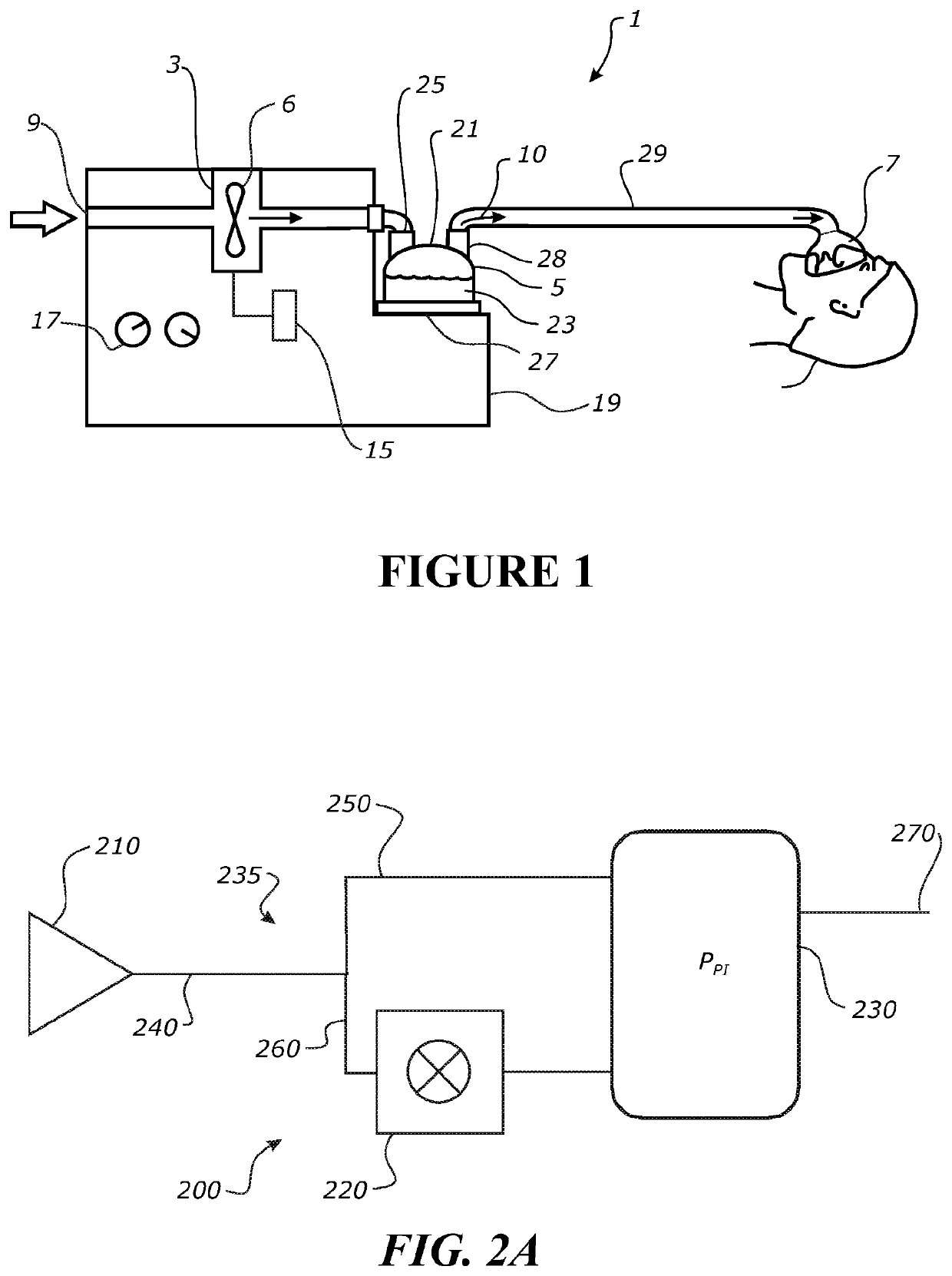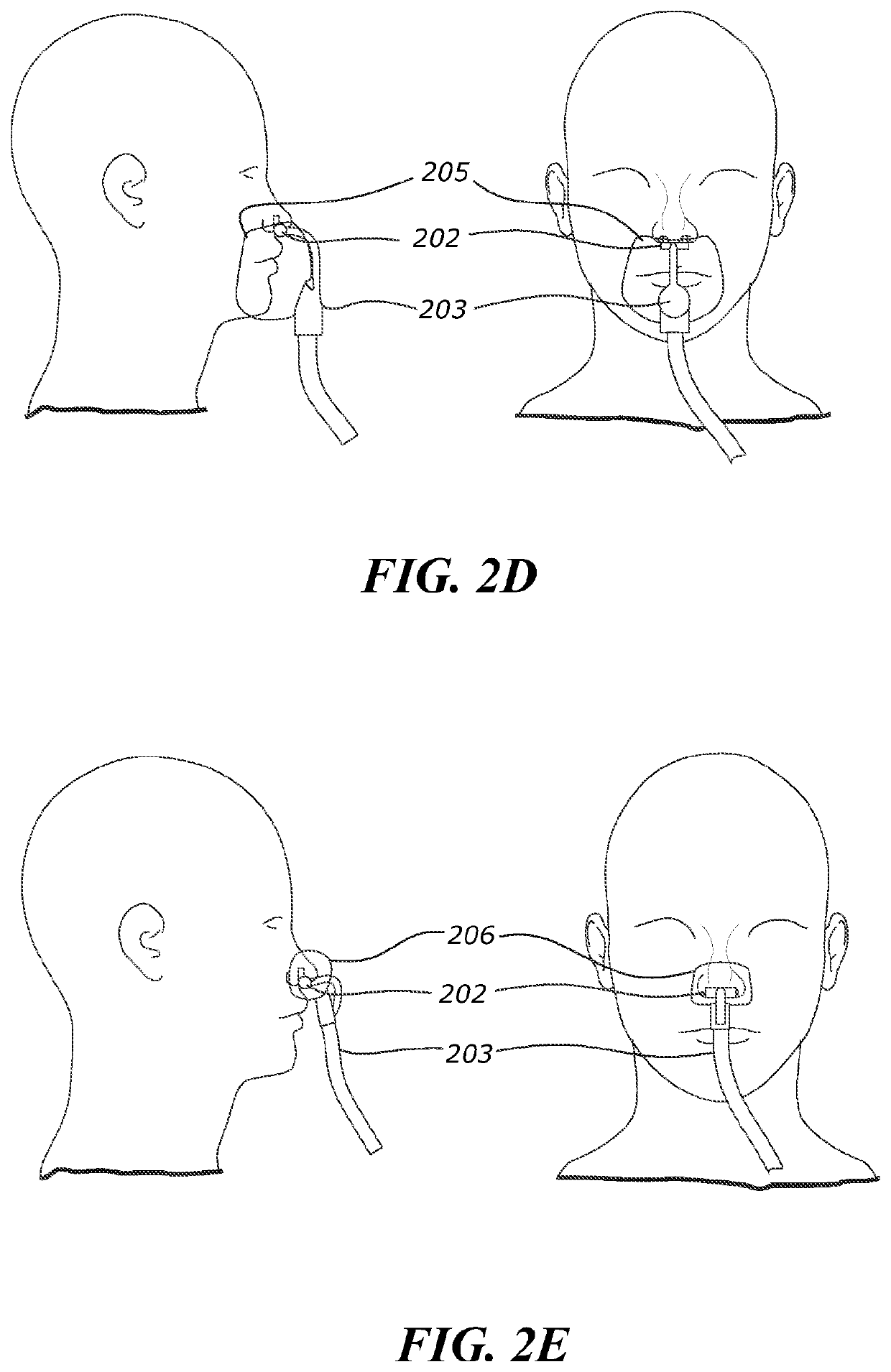System and method for non-invasive ventilation
a non-invasive ventilation and system technology, applied in the field of systems and methods for non-invasive ventilation, can solve the problems of user intolerance to the pressure of the patient interface, poor patient compliance, user intolerance, etc., and achieve the effect of increasing the resistance of the primary flow path, and increasing the resistance to gas flow
- Summary
- Abstract
- Description
- Claims
- Application Information
AI Technical Summary
Benefits of technology
Problems solved by technology
Method used
Image
Examples
first embodiment
[0155]FIGS. 7A-7C show a flap valve with a centrally located aperture. The mounting structure is surrounded by six radially disposed flaps each equidistantly spaced around the perimeter of the mounting surface. The raised lip as shown in FIGS. 7B and 7C provides a locating feature for mounting the flap valve in the primary flow path. Each flap extends away from the central aperture in a direction that is normal to the face of the ring. The flaps are substantially flat and have no curvature. The flaps are radially spaced around the mounting surface with a gap formed between each flap such that they do not contact each other. This gap may correspond with structures used for mounting the flap valve in the primary flow path or structures used to limit the flaps from bending in one direction while allowing for them to bend in a second, opposed direction. Each flap extends equidistantly away from the ring. The distal edges of each flap are curved. In combination, the distal edges of each ...
second embodiment
[0157]FIGS. 7D-7E show a flap valve with a non-centrally located aperture. The aperture is offset towards one side of the flap valve. Three non-uniformly shaped flaps are spaced around the perimeter of the mounting structure. Although the individual flaps are non-uniform, they are shaped and located so that the outside perimeter of the flap valve is substantially circular. The flaps are spaced apart such that they do not contact each other. The flap valve comprises a central, main flap and two smaller side flaps to either side of the central flap. The central flap is larger than each of the side flaps. The central flap is a different shape to the side flaps. The central flap is triangular shaped with a curved distal edge from the mounting structure.
[0158]The embodiment of the one-way valve shown in FIGS. 7F-7G has a curved and inclined flap surface. The embodiment of the one-way valve shown in FIGS. 7H-7I has a flat and inclined flap surface. The embodiment of the one-way valve show...
third embodiment
[0159]FIGS. 7F-7G show a flap valve comprising a centrally located aperture. The raised lip of the mounting structure is surrounded by six uniform and equidistantly spaced flaps. The flaps extend from the mounting structure in two dimensions (upwardly and outwardly). The flaps curve away from the mounting structure. Each flap has a profile that is substantially in the shape of a quarter oval.
PUM
 Login to View More
Login to View More Abstract
Description
Claims
Application Information
 Login to View More
Login to View More - R&D
- Intellectual Property
- Life Sciences
- Materials
- Tech Scout
- Unparalleled Data Quality
- Higher Quality Content
- 60% Fewer Hallucinations
Browse by: Latest US Patents, China's latest patents, Technical Efficacy Thesaurus, Application Domain, Technology Topic, Popular Technical Reports.
© 2025 PatSnap. All rights reserved.Legal|Privacy policy|Modern Slavery Act Transparency Statement|Sitemap|About US| Contact US: help@patsnap.com



